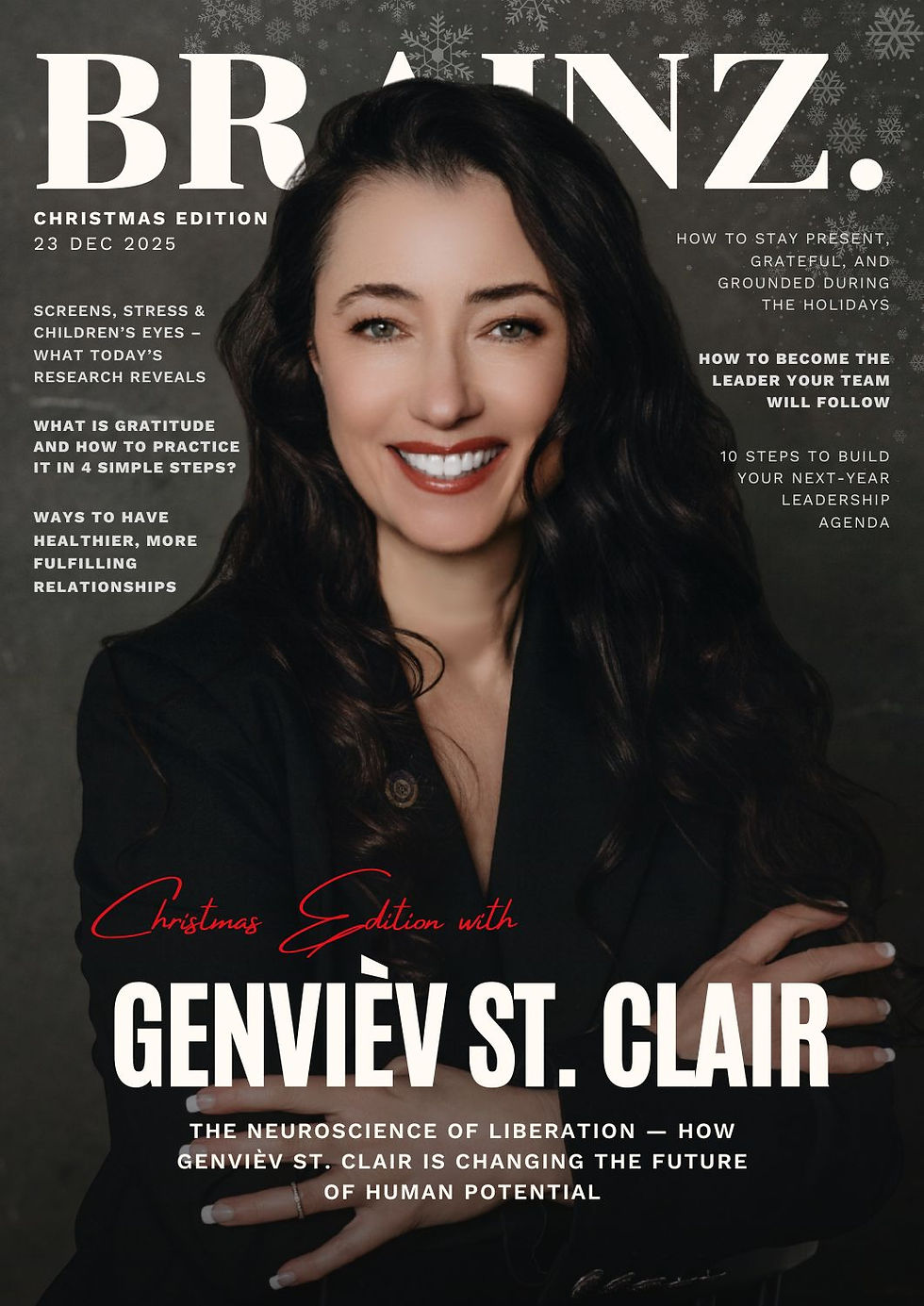7 Smart Ways to Market Medical Aesthetic Treatments Without Using Restricted Words Like ‘Botox’
- Brainz Magazine

- May 12
- 5 min read
Dr. Sunaina Shrivastava, an accomplished marketing leader, is a Faculty of Business & Consumer Behavior at New York University and CEO of YellowFryum Inc., a premier New York–based advisory firm delivering innovative, data-driven growth marketing solutions across the financial services, fintech, healthtech, and medical aesthetics sectors.

If you’re a medspa, dermatology clinic, or medical aesthetics brand, you already know the pain of trying to run ads only to get flagged or rejected. Platforms like Google, Meta, and Instagram are quick to block anything that even hints at restricted keywords like “Botox” or “injectables.” And in many regions, you’re navigating not just platform rules but medical advertising compliance laws too.

But here’s the good news: restriction breeds creativity. And with the right approach, your clinic can drive conversions, bookings, and brand trust without ever saying the words you’re not allowed to say.
7 smart and proven ways to market aesthetic services effectively
1. Reframe the desired outcome, not the device or drug
A high-performing ad in this space doesn’t rely on a product name, it builds interest around the psychological and visual transformation. We train attention toward emotional resonance: “refreshed,” “confident,” “rested,” and “radiant.” These are conversion triggers that bypass platform scrutiny and activate consumer desire.
Instead of: “We offer Botox treatments”
Say: “Smooth frown lines and restore your glow, with treatments designed for natural, visible results.”
2. Anchor language in client perception, not clinical precision
Most compliance issues arise from using language clients don’t even relate to. While clinicians speak in terms of rhytids or neuromodulators, your clients think in terms of how they feel and how they look. The smartest campaigns are those that match the patient’s inner dialogue.
Think: “I want to look less tired.”Say: “Feel brighter, fresher, and more you, with subtle, confidence-enhancing treatments.”This reduces risk while deepening emotional engagement.
3. Replace clinical explanation with sensory demonstration
In aesthetics, showing is safer, and often more persuasive, than telling. Visual proof points bypass copy restrictions while reinforcing credibility and aspiration. Behavioral studies confirm that prospective patients process “seeing the change” as more trustworthy than reading about the process.
Use compliant visual formats: before-and-after images (with consent), short no-voiceover reels, and patient video testimonials. Pair them with captions like: “What refreshed looked like, 10 days post-treatment.”
4. Build out high-trust knowledge assets, not just landing pages
Rather than thinking of your website as a destination, think of it as a behavioral funnel. Use educational resources, treatment guides, skincare myth busters, or “what to expect” explainers to invite micro-engagements. Every interaction deepens trust and extends session time, which both improves SEO and signals platform quality.
This content becomes your compliant advertising engine. Ads lead to it, emails build on it, and patients cite it.
5. Partner with a marketing team that understands compliance
When ad restrictions are this tight, you can’t afford to work with generalist marketers. You need a boutique partner who knows exactly how to navigate the unique regulations of medical aesthetics, from Meta’s restricted content filters to Google’s healthcare ad policies.
Work with a team that combines deep platform knowledge with an understanding of behavioral science, ethical messaging, and visual storytelling. This ensures your brand doesn’t just stay compliant, it stands out.
6. Build platform trust through consistent, low-risk signals
One advanced but often overlooked tactic is to engineer trust not just with your audience but with the ad platforms themselves. Meta and Google both use machine learning to evaluate the quality and reliability of your content over time. That means each compliant campaign you run builds your domain’s credibility, leading to fewer disapprovals and better reach.
Here’s how we build trust systematically:
Keep language consistent between your ad copy and landing pages. Even subtle mismatches can trigger flags.
Use clear privacy policies, disclaimers, and contact info. Platforms see this as a marker of professionalism.
Avoid aggressive formatting (all caps, too many emojis, hype words), which lowers trust scores.
This is a long game, but brands who do this well often see lower CPCs, higher approval rates, and more stable campaigns.
7. Shift the conversation to owned channels, where you control the message
The most effective brands don’t try to say everything in a Facebook ad. Instead, they use low-friction, high-compliance creative to drive users to safer, richer environments: landing pages, private DMs, or email threads. That’s where the real storytelling and conversion happen.
Once a lead is warm, your owned channels become a space where nuance is possible, education is welcomed, and compliance is easier to manage.
How we do it at YellowFryum Med
At YellowFryum Med, we don’t just follow the rules, we design around them. As a New York-based growth marketing firm specializing in highly regulated verticals like medical aesthetics and healthcare, our work lives at the intersection of strategy, science, and compliance.
We build integrated communication systems, not just ads, that are engineered to perform across platforms without triggering disapprovals. Whether it’s re-architecting your messaging hierarchy or developing platform-trusted assets, we apply academic rigor and real-world testing to every decision.
Our team includes marketing PhDs, behavioral scientists, and business school faculty who deeply understand both the platforms and the people behind the clicks. In categories where language is policed and nuance is everything, we help your brand speak clearly, convert confidently, and scale with integrity.
Conclusion
Marketing in the aesthetic space comes with unique limitations, but also big opportunities. By shifting the focus from product names to client outcomes, personal stories, and expert-led education, you can grow your practice in a way that’s creative, compliant, and genuinely impactful.
If you’re looking for compliant, high-impact marketing for medical aesthetic practitioners, whether you're a medspa, plastic surgeon, or dental practice, we’d love to help you scale without getting flagged. Reach out here or book a call directly at this link.
Read more from Dr. Sunaina Shrivastava, BEng., MBA, PhD
Dr. Sunaina Shrivastava, BEng., MBA, PhD, Professor @ NYU & Marketing Leader
Dr. Sunaina Shrivastava is a distinguished academic and business leader specializing in Behavioral Marketing and Growth Strategy. She serves as a Faculty of Business & Consumer Behavior at New York University (NYU), with research published in leading academic and business journals. Dr. Shrivastava is the Co-founder of YellowFryum Inc., a premier New York–based advisory firm with two verticals: YellowFryum Fin, accelerating growth for fintech & financial services, and YellowFryum Med, driving growth in the medical aesthetics & healthtech sectors through cutting-edge digital marketing solutions. She holds a Ph.D. in Marketing from the University of Iowa, an MBA in Marketing, and a Bachelor's degree in Electronics Engineering.










.jpg)